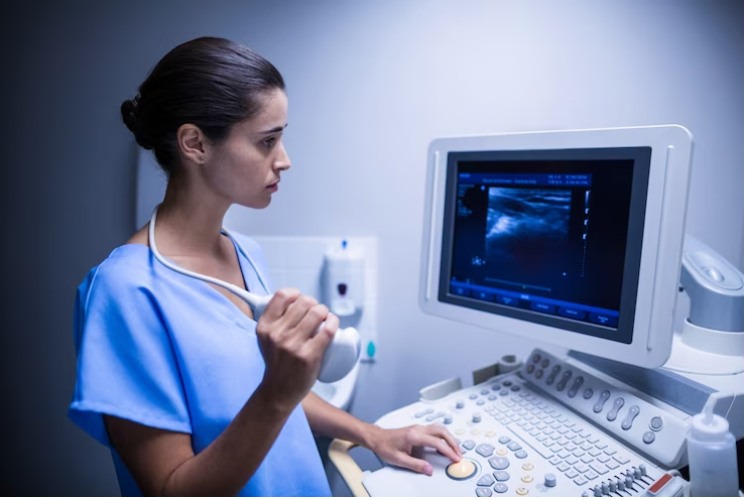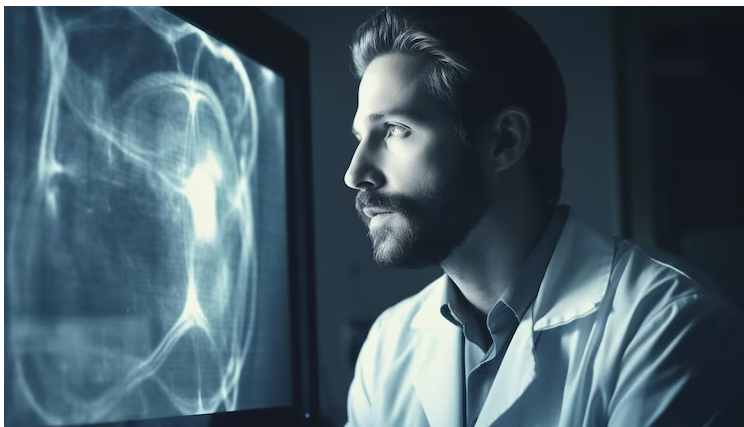Ultrasound technology has become an indispensable tool in modern medicine, enabling us to see the unseen, delve into the human body, and diagnose medical conditions with remarkable precision. In this blog post, we will take you on a comprehensive journey into the world of ultrasound waves, from its basic principles to its diverse applications in medical diagnostics and therapeutics. Join us as we unravel the science behind this revolutionary technology and explore its remarkable impact on healthcare.
Understanding Ultrasound Technology: A Comprehensive Overview
Ultrasound in Noida is a non-invasive medical imaging technique that uses high-frequency sound waves to generate real-time images of internal structures. At the heart of this technology is the ultrasound transducer, a handheld device that emits sound waves into the body and captures the echoes reflected back from tissues. These echoes are then processed and converted into detailed visual representations, allowing medical professionals to examine organs, tissues, and blood flow without the need for surgery.
 The unique ability of ultrasound to create real-time images in a cost-effective and non-ionizing manner makes it an invaluable tool in various medical fields.
The unique ability of ultrasound to create real-time images in a cost-effective and non-ionizing manner makes it an invaluable tool in various medical fields.
How Ultrasound Imaging Works: Unraveling The Science Behind The Images?
The science behind ultrasound imaging lies in the principle of sound wave propagation. When the transducer emits sound waves into the body, they travel through different tissues, encountering boundaries between organs, fluid-filled spaces, and solid structures. At each interface, some of the sound waves are reflected back to the transducer, while others continue to penetrate deeper.
By analyzing the time it takes for sound waves to return and the strength of the echoes, ultrasound systems create detailed cross-sectional images of the internal structures. The interpretation of these images requires expertise and is crucial for accurate diagnosis.
Applications of Ultrasound In Medicine: From Diagnostics To Therapeutics
Ultrasound finds extensive application in the field of medical diagnostics. One of the most well-known uses is in prenatal care, where ultrasound allows expectant parents to catch a glimpse of their developing baby in the womb. Prenatal ultrasounds help monitor fetal growth, detect abnormalities, and determine the baby’s position before delivery.
Additionally, ultrasound is widely used for abdominal and pelvic imaging, providing vital information about the liver, kidneys, gallbladder, uterus, and ovaries. It aids in diagnosing conditions like kidney stones, tumors, and gallbladder disease.
Ultrasound’s versatility also extends to cardiology, where echocardiography plays a pivotal role in visualizing the heart’s structure and function. It assists cardiologists in diagnosing heart diseases, assessing cardiac function, and guiding various heart-related interventions.
Moreover, ultrasound is employed in vascular imaging to assess blood flow in arteries and veins, enabling the detection of blood clots and vascular conditions.
Beyond diagnostics, ultrasound has therapeutic applications as well. High-intensity focused ultrasound (HIFU) is used for targeted tissue ablation in cancer treatment, providing a non-invasive alternative to surgery.
Prenatal Ultrasound: A Journey Into The Womb
Prenatal ultrasound has revolutionized the experience of pregnancy for expectant parents. With advancements in ultrasound technology, parents can now see their baby’s features and movements in remarkable detail. There are different types of prenatal ultrasounds, including 2D, 3D, and 4D ultrasounds.
2D ultrasounds provide two-dimensional black-and-white images, commonly used to visualize the fetus’s growth and monitor the heartbeat. 3D ultrasounds add depth to the images, offering a more lifelike view of the baby’s facial features and body contours. 4D ultrasounds take it a step further, providing real-time videos, capturing the baby’s movements in the womb.
While prenatal ultrasound is generally safe, it is essential to use it judiciously and only when medically necessary, considering the potential risks associated with excessive exposure to sound waves.
Beyond Babies: Ultrasound In Veterinary Medicine
The benefits of ultrasound are not limited to humans; the technology has made significant contributions to veterinary medicine as well. In veterinary practices, ultrasound is frequently used to diagnose and monitor medical conditions in animals. Veterinary ultrasound can detect tumors, assess organ health, and evaluate pregnancies in pets and livestock.
The non-invasive nature of ultrasound imaging is particularly valuable for animals, as it reduces stress and discomfort compared to invasive procedures.
Ultrasound In Cardiology: Visualizing The Heart’s Inner Workings
Cardiovascular diseases remain a significant health concern worldwide. Thankfully, ultrasound has emerged as a powerful tool in cardiology, enabling cardiologists to visualize the heart in great detail. Echocardiography, the use of ultrasound to create images of the heart, helps diagnose heart conditions, such as heart valve disorders, congenital heart defects, and heart muscle abnormalities.
In addition to diagnosis, echocardiography plays a crucial role in monitoring the progress of heart conditions and assessing the effectiveness of treatments. It is often used in conjunction with stress testing to evaluate the heart’s response to physical exertion.
Ultrasound Safety And Best Practices: Protecting Patients And Practitioners
While ultrasound is considered safe for diagnostic imaging, it is essential to adhere to safety guidelines to protect patients and healthcare practitioners. Ultrasound is non-ionizing, meaning it does not use harmful ionizing radiation like X-rays or CT scans. However, excessive or prolonged exposure to ultrasound waves may cause thermal effects, leading to localized tissue heating.
Medical professionals undergo specialized training to use ultrasound equipment safely and effectively. They carefully choose appropriate settings and minimize exposure time to ensure patient safety. Pregnant women and their fetuses, in particular, require cautious use of ultrasound to avoid potential risks.
Ultrasound-Guided Procedures: Precision In Interventional Medicine
Ultrasound guidance has transformed various medical procedures, enhancing their precision and success rates. In interventional radiology, ultrasound helps guide biopsies, needle aspirations, and catheter placements. Real-time imaging allows doctors to target specific areas accurately, reducing the need for exploratory surgery.
In surgery, intraoperative ultrasound assists surgeons in visualizing internal structures during procedures. It aids in tumor resections, organ transplants, and other intricate surgical interventions, enabling a higher level of surgical precision.
Future Innovations: Advancing Ultrasound Technology For Tomorrow
The field of ultrasound continues to evolve rapidly, with ongoing research and technological advancements promising exciting possibilities for the future. Researchers are exploring novel applications of ultrasound in fields such as neuroscience, where it may be used for non-invasive brain stimulation and drug delivery. Advancements in 3D and 4D imaging are also expected to offer more detailed and realistic representations of internal structures, further enhancing diagnostic capabilities.
Additionally, portable and handheld ultrasound devices are becoming more accessible, enabling point-of-care imaging in remote and resource-limited settings. These innovations hold the potential to revolutionize healthcare delivery worldwide.
Conclusion
Ultrasound technology has truly revolutionized modern medicine, enabling us to see and understand the human body in ways that were once unimaginable. From prenatal care to cardiac imaging, ultrasound’s applications are diverse and continually expanding. As we move into the future, further advancements in ultrasound technology will undoubtedly lead to more accurate diagnoses, safer interventions, and improved patient outcomes, solidifying its position as an indispensable tool in the realm of healthcare.

Francis Burns is an avid writer from Louisiana. With a Bachelor’s in English and a background in journalism, Francis has been writing for a variety of media outlets for the last five years. He specializes in stories about the local culture and loves to fill his work with inspiring words. When not writing, Francis enjoys exploring the outdoors of Louisiana and photographing nature.




